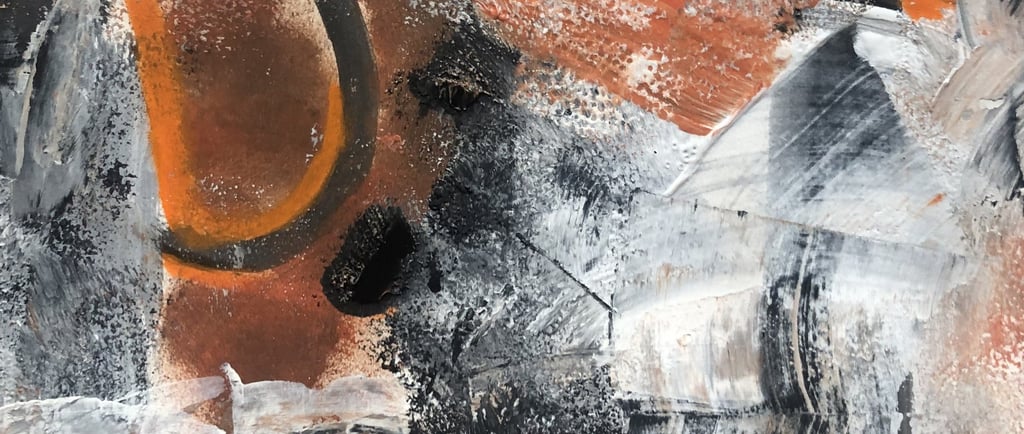Simple Somatic Exercises to Tap Into Creative Flow Before Filming
BELONGINGCREATIVITYSTORYTELLING
Maša Hilčišin
5/23/20253 min read


As an artist and educator who has spent years within the walls of art schools, I often return to this tender question: What makes a teacher a guide?
We teach rules—of composition, of camera work, of storytelling. And rightly so. One must master the frame to break it. One must learn the architecture of cinema before daring to melt its walls into mist.
But my heart has always been drawn to what pulses underneath—the unseen rivers of emotion, the wordless gestures, the wild inner world that longs to spill out into story.
Beyond the boundaries of conventional cinema lies a space where feeling leads form, where sensation precedes structure. And it is in this space that I found a different kind of creative flow, one led by the body, the breath, and the raw rhythm of being.
The Dance Before the Camera
Before I film—before I even sketch the bones of a storyboard—I begin with my body. No choreography, no goal. Just movement. Authentic, spontaneous, uncensored. A stretch of the spine, a trembling in the hands, a breath held a moment too long. These are not performances. They are whispers from the body’s inner archive.
Some days, this becomes a meditation. Other days, a dance. I listen to the stories stored in my shoulders, the narratives curled in my belly. I let my body speak before my mind interrupts. And in that somatic silence, I begin to paint.
Yes, with real paint—abstract, fluid, alive. I smear color with fingers still vibrating from movement, letting anxiety or joy or grief leave traces on paper. I do not aim for beauty. I aim for honesty.
From Abstract Emotion to Embodied Story
These painted explorations become the seeds of stories. Not yet scripts, but felt impressions—a shade of blue becomes a lost memory, a jagged line a cry for transformation. I ask my body: What season lives here? What texture does this sadness have?
From there, the story begins to unfold. Not through logic, but through dialogue with the senses. My hands guide me toward the image, my breath toward pacing, my skin toward sound. The body becomes both oracle and editor.
As Leah Emmott writes in her paper Somatics, Flow and Creativity, "research done at Harvard by Teresa Amabile (2005) found that individuals see a spike in creativity for a number of days after experiencing an affective state similar to that experienced during flow. Amabile also found that creative insights were consistently associated with flow states. This points to a residual effect that flow states may have on keeping people in a creative zone over longer periods of time." (Emmott, 2020)
When we enter a state of creative flow, the part of the brain that self-monitors goes quiet. And what awakens instead is the center of our narrative self—the part that crafts stories from experience, memory, and dream. To create is not just to make—it is to remember ourselves, to find meaning in movement.
A Ritual of Return
Each day, I return to the canvas. Not to finish it, but to feel it anew. The same with film. I let movement lead me to painting, and painting lead me to characters—sometimes shadows, sometimes blooming flowers, sometimes just a pulse of light across a wall.
I film not to capture perfection but to witness a fleeting truth. Through this cyclical ritual—movement, painting, reflection, filming—I build a storyboard not from outlines but from the heartbeat of an idea. A flicker, a sigh, a shape that speaks a wordless yes.
A Different Kind of Storytelling
This way of working is not always taught in schools, where structure reigns. And yet, it is the very rebellion against structure that allows us to return to it with deeper purpose.
Rules are the spine. But the body—the body is the breath.
To those who are drawn to story but overwhelmed by form, I offer this: Start with your body. Let your shoulders speak. Let your grief dance. Let your fingers tell you what comes next. Art is not born in the mind alone. It is born where we tremble. Where we trust. Where we listen deeply, and love what we find.
Only then, begin to build the story. Only then, bring in the frame. Because when we create from the inside out, our stories carry not just narrative—they carry soul.
Reference:
Emmott, Leah (2020) Somatics, Flow and Creativity: Sacred Scholarship Paper & Presentation Video, NaiAsa Institute NeuroSomatic™ Flow Teacher Training - Sept 2020. Available at: https://naiasainstitute.earth/the-medicine-of-flow-sacred-scholarship/2020/9/23/somatics-flow-and-creativity-by-leah-emmott (Accessed: May 23, 2025)